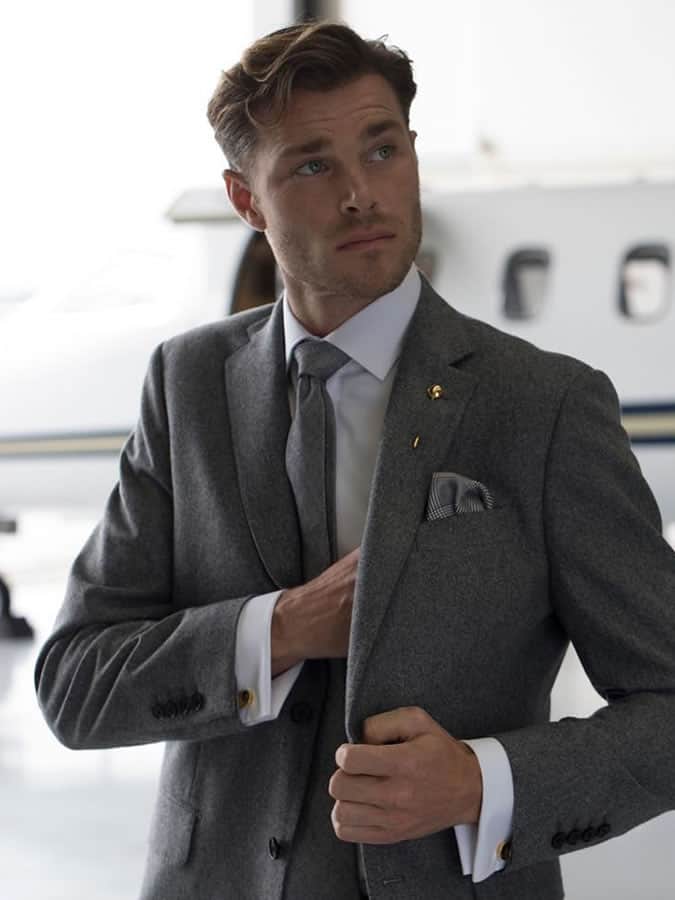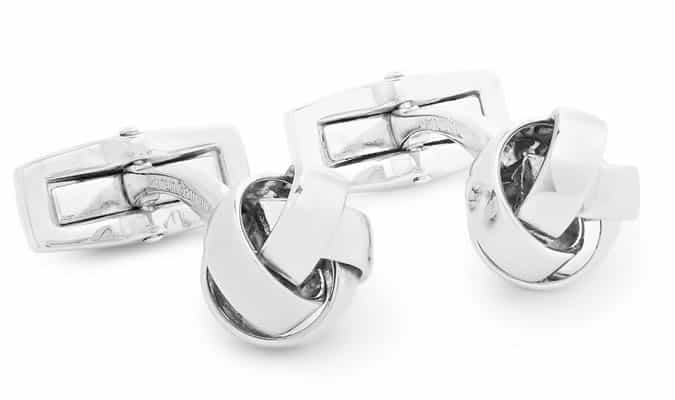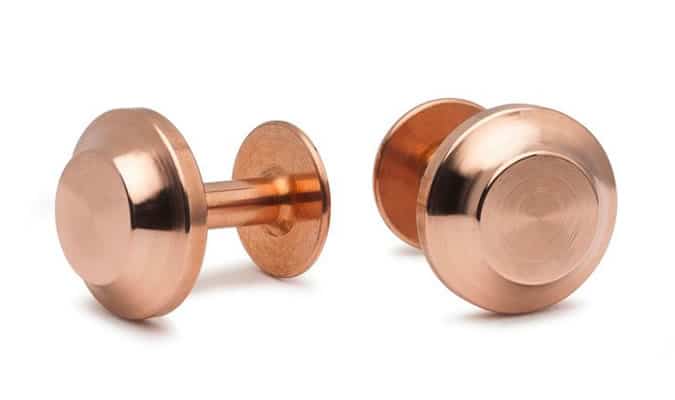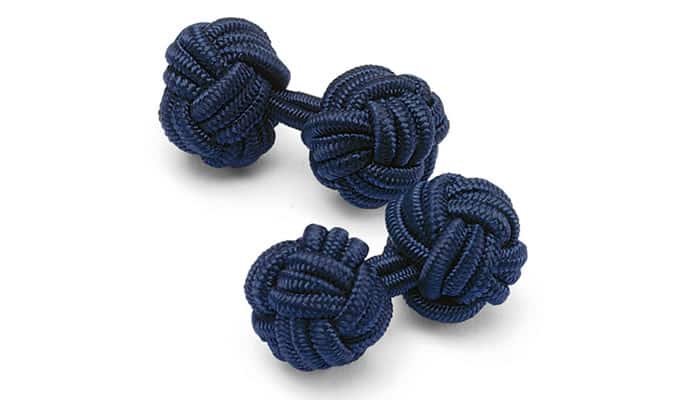When it comes to matters of the wardrobe, it’s well-known that the small details make a big difference. And as far as suits are concerned, few are smaller, or more impactful, than cufflinks.
Granted, these minuscule pieces of menswear have come in for a bum wrap in recent years, having suffered years of abuse at the hands (wrists?) of garish hedge fund managers. But deployed correctly, they are one of the most criminally underrated weapons in any man’s sartorial arsenal.
Aside from preventing you from rocking up at a formal event with sleeves billowing like Gandalf, they also allow for a much-welcomed dash of personality.
Rather than an afterthought, cufflinks should be looked upon as a valuable styling tool. Think about it, where else in the male wardrobe will you find a piece of jewellery that is both functional and decorative in equal measures? The answer, unless you’ve taken to wearing a nice sparkly tiara to keep your hair in place during football practice, is never.
So, with that very much in mind, here is all the knowledge you need to get the most out of one of menswear’s most overlooked accessories.
What Are Cufflinks?
While most shirts that guys wear to work on a daily basis feature a one-button barrel cuff that’s fastened by buttons, those with double (i.e. French) cuffs and dress shirts worn to formal and black tie events require cufflinks.
These small decorative items, usually made from a silver or gold-toned metal, act in place of the buttons, securing the sleeve ends together and making sure that the cuffs fit snug around the wrists.
Their origin can be traced back to the beginning of the sixteenth century. At the time, the only thing keeping cuffs from flapping about were small lengths of string that were used to tie the sleeve ends in place.
By the time French King Louis XIV took to the throne in 1643, these crude cuff fasteners were on the out, and in came decorative glass versions joined together by a small chain. In the years that followed, production techniques evolved and men took to wearing more extravagant jewelled styles as a way to show their status. In other words, they were the tacky hedge fund managers of their time.
What Shirts Require Cufflinks?
Whether or not you require cufflinks comes down to the shirt you are wearing. (Getting that right is another topic altogether.) While they’re a nice optional extra at times, at others they are viewed as a non-negotiable part of a dress code.
“Cufflinks should always be worn with formal dress shirts,” explains Dean Gomilsek–Cole, head of design at Jermyn Street shirtmaker Turnbull & Asser, asserting their important and black tie events in particularly. “As best practice, they should match the shirt’s front studs, so I recommend a white, smoked grey or black mother of pearl design.”
The traditional dress shirts Gomilsek–Cole refers to usually feature French cuffs, which are intentionally longer and designed to be folded back on themselves, hence the need to fasten them.
As a fairly rudimentary way of assessing whether you should be wearing a set or not, take a look at your shirt cuffs. If they don’t have buttons or have double cuffs, it’s probably a good idea to pop some cufflinks on.

When To Wear Cufflinks
Cufflinks are most commonly worn for formal and semi-formal events, weddings and occasionally with business attire.
While there are plenty of stripped-back and playful designs available that work as part of a more dressed-down look, cufflinks should be avoided altogether with a completely casual rig – especially one that doesn’t include a suit jacket.
How To Style Cufflinks
The sheer variety of styles, shapes, materials and colours on the market today presents an excellent way to inject a dose of personality into an otherwise drab outfit. However, there are some hard and fast rules to follow.
Black Tie
For the most formal of occasions, such as those that require a dinner suit, it’s best to keep any and all finishing touches classic and in subtle colours.
Cufflinks are no different, so in these instances, anything comical or novelty should be avoided like the plague. Unless, of course, you want the rest of the guests to think you’ve been hired for entertainment.
 Alice Made This
Alice Made This
Weddings
Cufflinks don’t just serve a functional purpose; they can also be used to introduce some energy into an outfit. Use events such as a wedding to get a bit more experimental with colours and shapes.
If it’s in keeping with your style, novelty cufflinks aren’t out of the question, provided that they’re still tasteful. Labels such as Paul Smith, Tateossian and Alice Made This have some excellent examples of that manage to be both stand-out and stylish at the same time.
 Alice Made This
Alice Made This
Business
When it comes to business attire, it’s wise to steer clear of anything too crazy. Simple, understated designs are the way to go, but you can still experiment with colours, patterns and materials.
Whatever you do, don’t go for anything overly ostentatious – leave those to the oligarchs. And lastly, always match the metal of your cufflinks to other accessories such as your tie clip.
 Alice Made This
Alice Made This
Types Of Cufflink
For an accessory that most men pay little attention too, there are plenty of different styles of cufflink available. As well as the design options covering off everything from lavish to laid-back, there are also a number of ways in which they fasten.
Bullet Back Cufflinks
The bullet back is the most common type of cufflink. The style generally features some form of decorative detailing on one side and a small, bullet-shaped clip on the other.
The narrow cylinder on the reverse rotates to thread through the shirt’s cuff holes, where it can be twisted back into position to secure. It’s the perfect entry-level cufflink and is ideal for guys who like a snug fit. Buy Now:
Whale Back Cufflinks
Whale back cufflinks work in much the same way as their bullet back cousins. The only difference being is that the fastening is shaped like a whale tail as opposed to a bullet.
After bullet backs, whale backs are one of the most popular styles due to their ease of use and the security provided by the handy T-bar locking mechanism. Buy Now:
Chain Link Cufflinks
While the majority of cufflinks are held in place using a metal bar, dual-sided chain link variations have a short length of (surprise surprise) chain in its place.
As well as being more decorative, this style also gives a slightly looser fit, making it a sound option if you find traditional options too restrictive. Buy Now
Fixed Back Cufflinks
There are no moving parts in this design, which means they are slightly more difficult to insert than bullet or whale back cufflinks.
However, many fixed backing styles are reversible, giving you two pairs of cufflinks for the price of one and making your money go further. Buy Now
Stud Cufflinks
Similar to fixed back cufflinks, studs feature no moving parts and are noticeably smaller than other designs, making them slightly more fiddly to fasten into place. However, what they lack in practicality, they make up for in durability and fuss-free styling.
Comprised of two round-studs, one slightly larger than the other, they slot through the empty buttonholes on the shirt to hold the two parts of the cuff together. Buy Now
Ball Return Cufflinks
Much like the stud design, a ball return cufflink features no moving parts. Instead, the style uses a spherical head attached to a curved bar at the back.
Due to its rigid body, the ball return cufflink is significantly easier to affix than the chain design. Simply line your buttonholes up, pop the smaller end through, and you’re ready to go. Buy Now
Silk Knot Cufflinks
Introduced by Charvet, widely considered the world’s first shirt shop, in Paris during the early 1900s, the silk knot is a classic and more affordable option that is hard to go wrong with.
This style is comprised of two adjoining “monkey’s fist” knots and has since become so popular that metal cufflinks shaped to look like them are now quite common. Buy Now
Cufflink Dos And Don’ts
Do: Go for clean, simple designs at black tie events or with business attire.
Don’t: Wear comedy cufflinks unless you have the personality to carry it off.
Do: Feel free to get creative with colours, patterns and shapes for less formal events.
Don’t: Opt for gold with engraved initials unless you want people to think you’re the latest addition to Dragon’s Den.
Do: Always wear cufflinks with French cuffs.
Don’t: Fasten your sleeves with bits of string like the men of the early sixteenth century.
Do: Match your cufflinks to your shirt studs.







